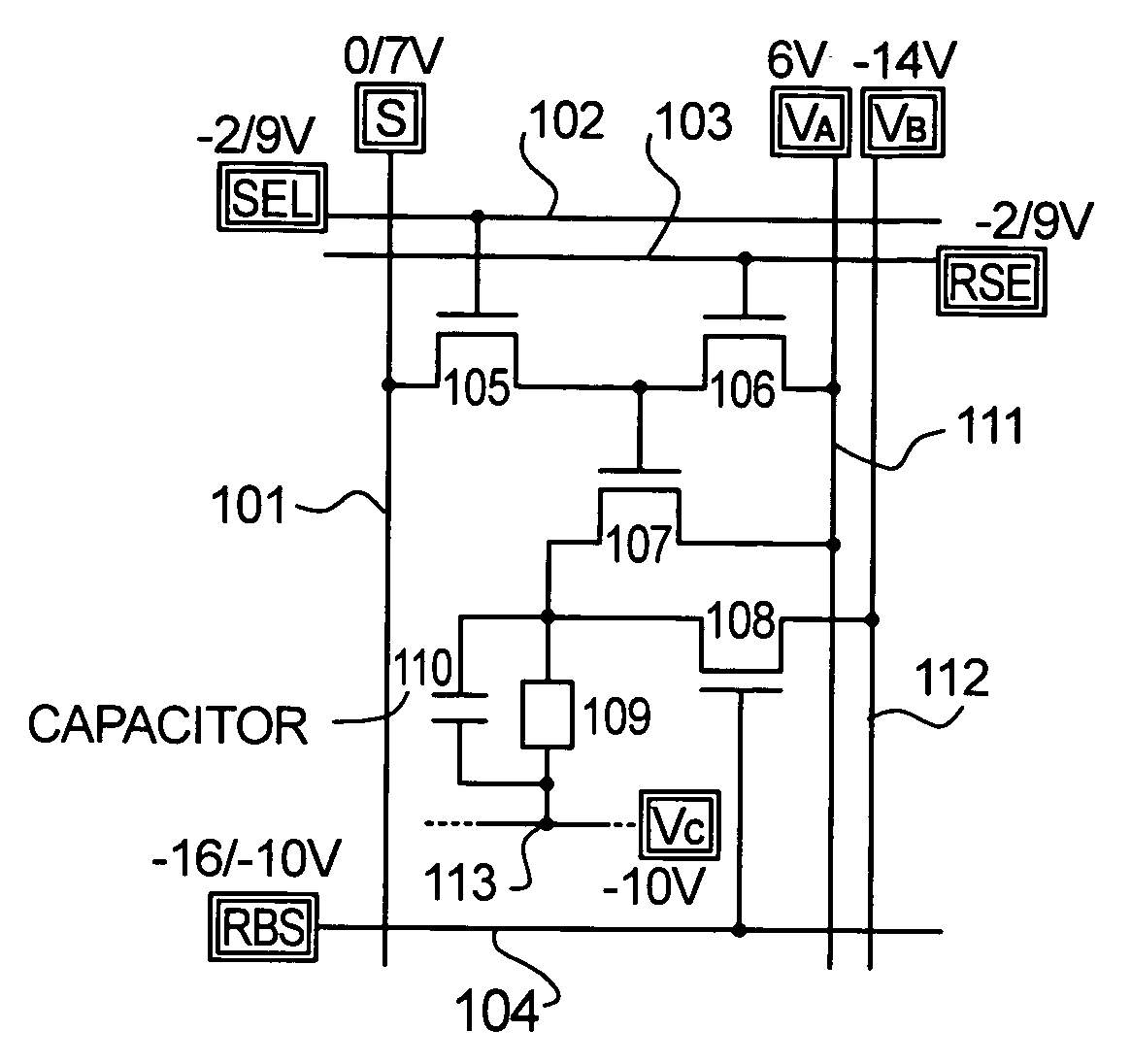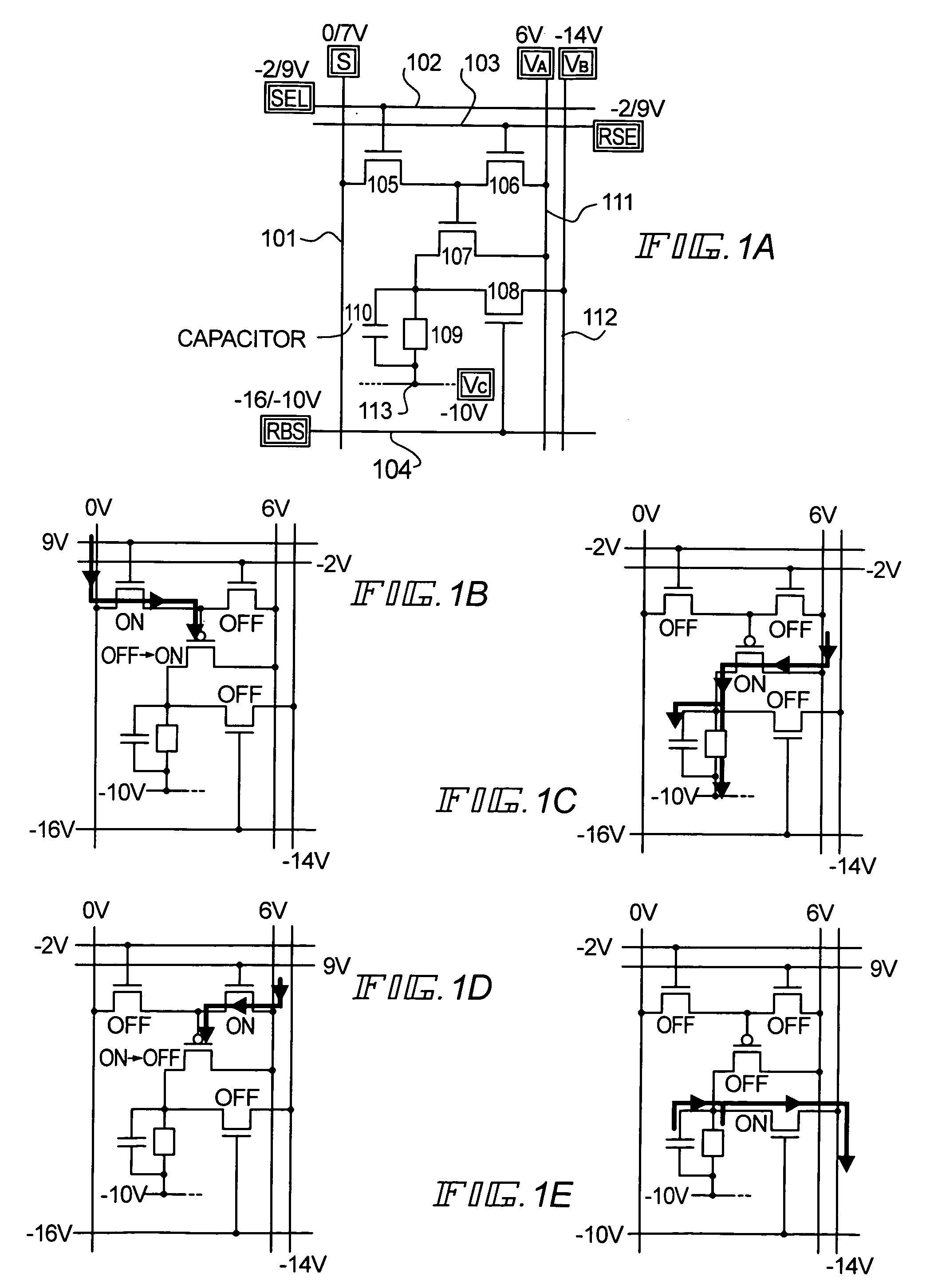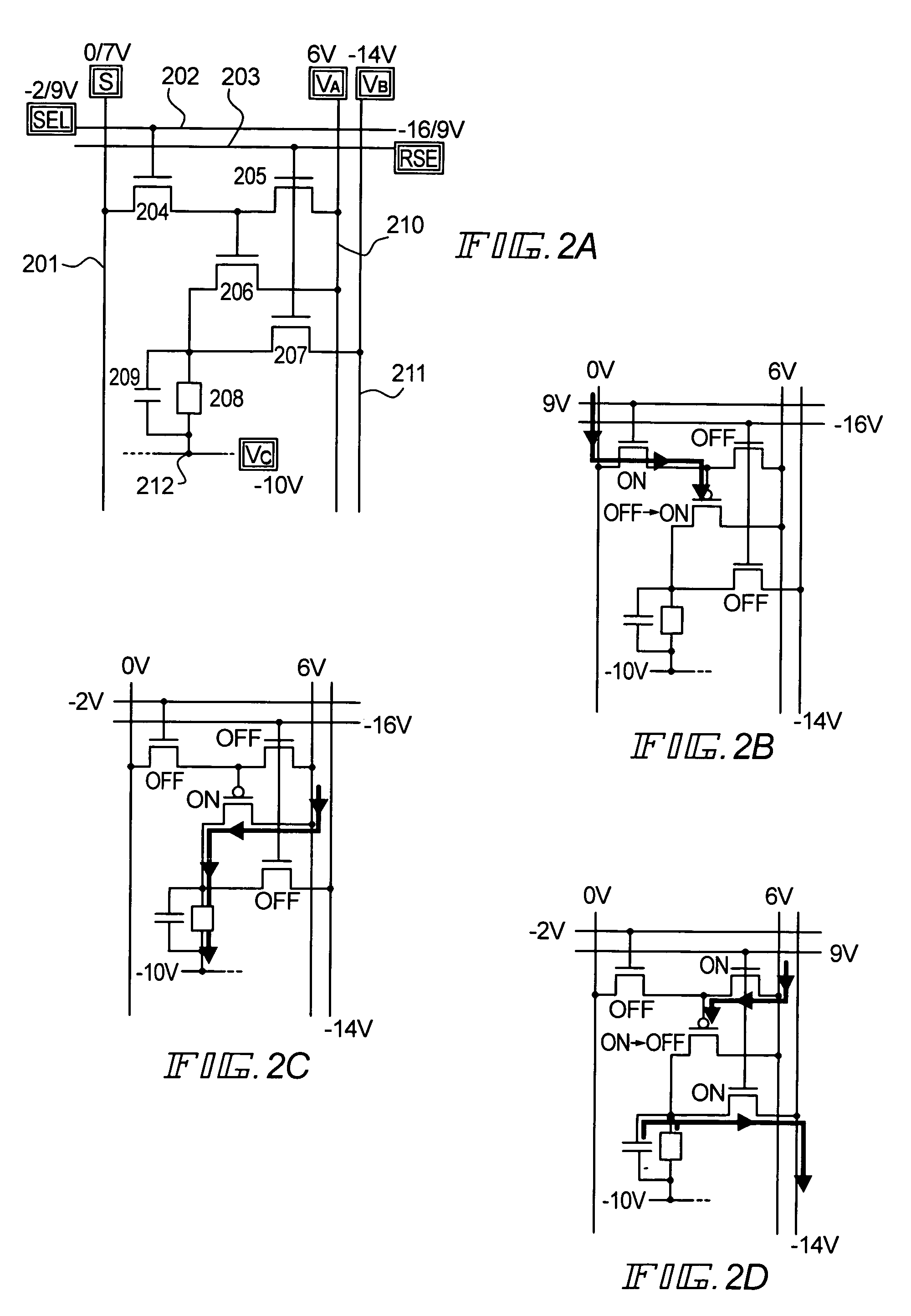Light emitting device and method of driving the light emitting device
a technology of light emitting device and electric element, which is applied in the direction of static indicating device, solid-state device, instruments, etc., can solve the problem of voltage endurance of tfts structure other parts tending to become a problem, and achieve the effect of reducing the deterioration of el elements
- Summary
- Abstract
- Description
- Claims
- Application Information
AI Technical Summary
Benefits of technology
Problems solved by technology
Method used
Image
Examples
embodiment mode 1
[0137]FIGS. 1A to 1E show an embodiment mode of a pixel structure for performing alternating current drive by the present invention.
[0138]As shown in FIG. 1A, each pixel has a source signal line (S) 101, a write-in gate signal line (SEL) 102, an erasure gate signal line (RSE) 103, a reverse bias gate signal line (RBS) 104, a switching TFT 105 as a third means, an erasure TFT 106 as a fifth means, a driver TFT 107 as a fourth means, a reverse bias TFT 108 as a sixth means, an EL element 109, an electric current supply line (VA) 111, and a reverse bias electric power source line (VB) 112. One electrode of the EL element 109 (pixel electrode) is connected to a source region or a drain region of the driver TFT 107, and the other electrode of the EL element 109 (opposing electrode) is connected to an opposing electric power source line (VC) 113.
[0139]Electric potentials on each signal line and electric power source line within FIG. 1A are shown as electric power source potentials, or by ...
embodiment mode 2
[0147]FIGS. 2A to 2D show an embodiment mode, which differs from embodiment mode 1, of a pixel structure for performing alternating current drive by the present invention.
[0148]As shown in FIG. 2A, each pixel has a source signal line (S) 201, a write-in gate signal line (SEL) 202, an erasure and reverse bias gate signal line (RSE) 203, a switching TFT 204, an erasure TFT 205, a driver TFT 206, a reverse bias TFT 207, an EL element 208, an electric current supply line (VA) 210, and a reverse bias electric power source line 211 (VB). One electrode of the EL element 208 (pixel electrode) is connected to a source region or a drain region of the driver TFT 206, and the other electrode of the EL element 208 (opposing electrode) is connected to an opposing electric power source line (VC) 212.
[0149]Electric potentials on each signal line and electric power source line within FIG. 2A are shown as electric power source potentials, or by signal L level and H level electric potentials. For exam...
embodiment mode 3
[0157]FIGS. 3A to 3E show an embodiment mode, which differs from embodiment modes 1 and 2, of a pixel structure for performing alternating current drive by the present invention.
[0158]As shown in FIG. 3A, each pixel has a source signal line (S) 301, a write-in gate signal line (SEL) 302, an erasure gate signal line (RSE) 303, a reverse bias gate signal line (RBS) 304, a switching TFT 305, a driver TFT 306, an erasure TFT 307, a reverse bias TFT 308, an EL element 309, an electric current supply line (VA) 311, and a reverse bias electric power source line (VB) 312. One electrode of the EL element 309 (pixel electrode) is connected to a source region or a drain region of the driver TFT 306 through the erasure TFT 307, and the other electrode of the EL element 309 (opposing electrode) is connected to an opposing electric power source line (VC) 313.
[0159]Electric potentials on each signal line and electric power source line within FIG. 3A are shown as electric power source potentials, o...
PUM
 Login to View More
Login to View More Abstract
Description
Claims
Application Information
 Login to View More
Login to View More - R&D
- Intellectual Property
- Life Sciences
- Materials
- Tech Scout
- Unparalleled Data Quality
- Higher Quality Content
- 60% Fewer Hallucinations
Browse by: Latest US Patents, China's latest patents, Technical Efficacy Thesaurus, Application Domain, Technology Topic, Popular Technical Reports.
© 2025 PatSnap. All rights reserved.Legal|Privacy policy|Modern Slavery Act Transparency Statement|Sitemap|About US| Contact US: help@patsnap.com



